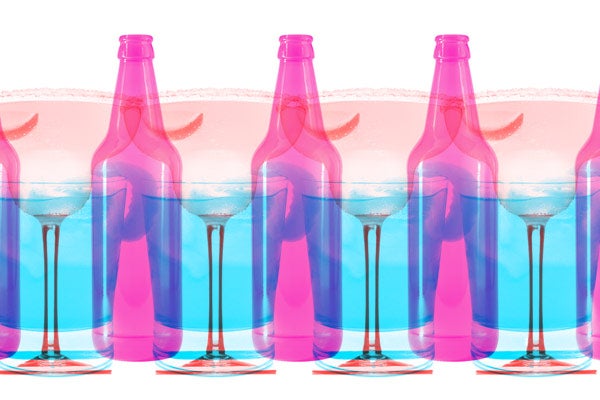
Mimosas at brunch, a few margs after work…that’s not a crazy amount of boozing, right? Actually, it might be. The facts about women and drinking are sobering: Under guidelines issued by the U.S. Dept of Health and Human Services, women who have just one drink a day are considered moderate drinkers. Those who consume three to four drinks in one sitting are considered binge drinkers.
And, while binge drinking might seem like a “crazy college years” thing, the stats suggest otherwise: According to the Centers For Disease Control And Prevention, 70% of binge-drinking episodes involve adults age 26 and older. These statistics can seem shocking to a social drinker who doesn’t necessarily cravealcohol, but is used to ordering a few rounds with friends on the weekends. So, if you’re technically, occasionally binge drinking by these guidelines…how bad is that for you, really?
For answers, it’s important to understand why the binge-drinking guidelines are so different for men and women. Compared to men, women’s stomachs produce less of the enzyme that helps to break down alcohol; that causes our stomachs to absorb more alcohol, while also releasing more alcohol into the liver and the bloodstream. Secondly, women typically weigh less than men, and as such, we have less water in our bodies to dilute the alcohol in our system. That means one drink is much more potent when circulating in a woman’s bloodstream than it is when circulating in a man’s body.
While not all women who occasionally binge will develop drinking problems, some women do. Other perils of binge drinking are obvious: alcohol poisoning, risky behavior, and brutal hangovers. Beyond that, though, lies a breadth of research that ties alcohol consumption to some seriously scary stuff, like breast cancer, brain damage, and heart disease — and when female drinkers develop these problems, they are more affected than their male counterparts.
Speaking of the C-word, here’s a little-known fact that Dr. Richard Saitz, a primary care internist and professor of medicine and epidemiology at Boston University Medical Center points out. “There is no disagreement among the World Health Organization or the Department of Health and Human Services in the U.S. National Toxicology Program that the alcohol we drink is a classified as a carcinogen,” he says. “We usually don’t talk about ‘moderate use’ of a carcinogenic substance. And, we usually don’t talk about carcinogens by saying, ‘It’s a carcinogen if you have this much, but not if you have that much.’” All of which is to say that women should hold a special interest in easing up on the sauce.
Still, even when considering the cancer quotient and health warnings, many women surpass the seven-drinks-per-week recommendation and seemingly carry on just fine. Considering all the contradictory evidence, what exactly is the cut-off point for knowing when to say when? “For alcohol amounts, you don’t want to get in a pissing match about the cut-offs themselves,” Saitz says. Instead of simply thinking about confining intake to “moderate” limits, Saitz encourages people to think about consumption in a continuous sense. “Most people think there’s some cut-off, but really, there isn’t. The more you increase [alcohol consumption], the more likely you are to experience harmful health consequences. The more you drink, or the more frequently you drink, the more the risks of those consequences go up.” READ MORE
RELATED::Music Soul Legends – Then and Now
RELATED::Well Alright! Delta Pilot Retires After 45 Years, Never Missed Day Of Work















